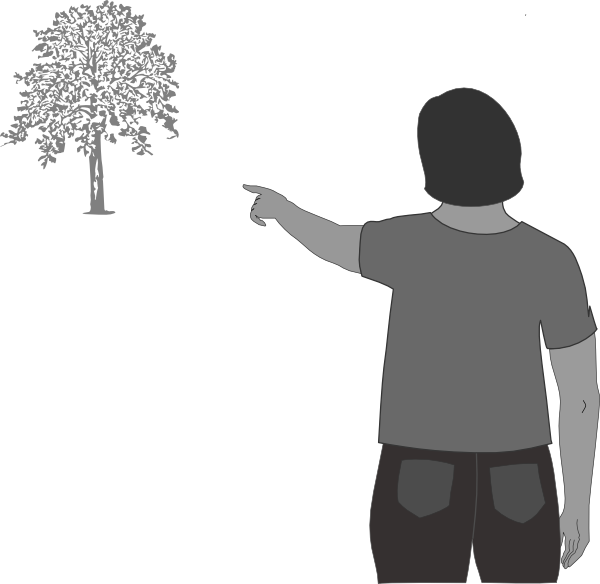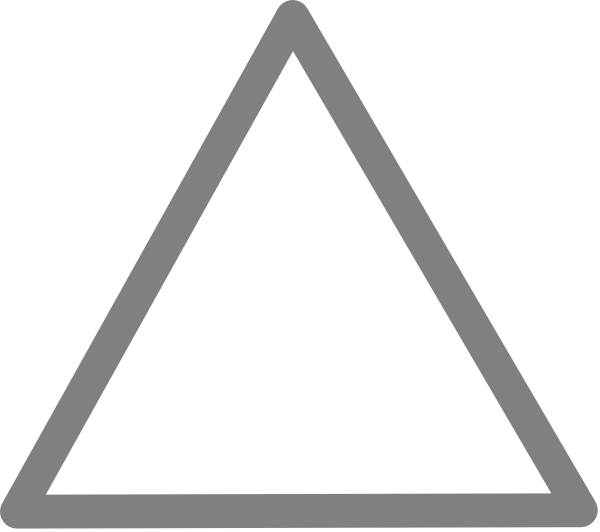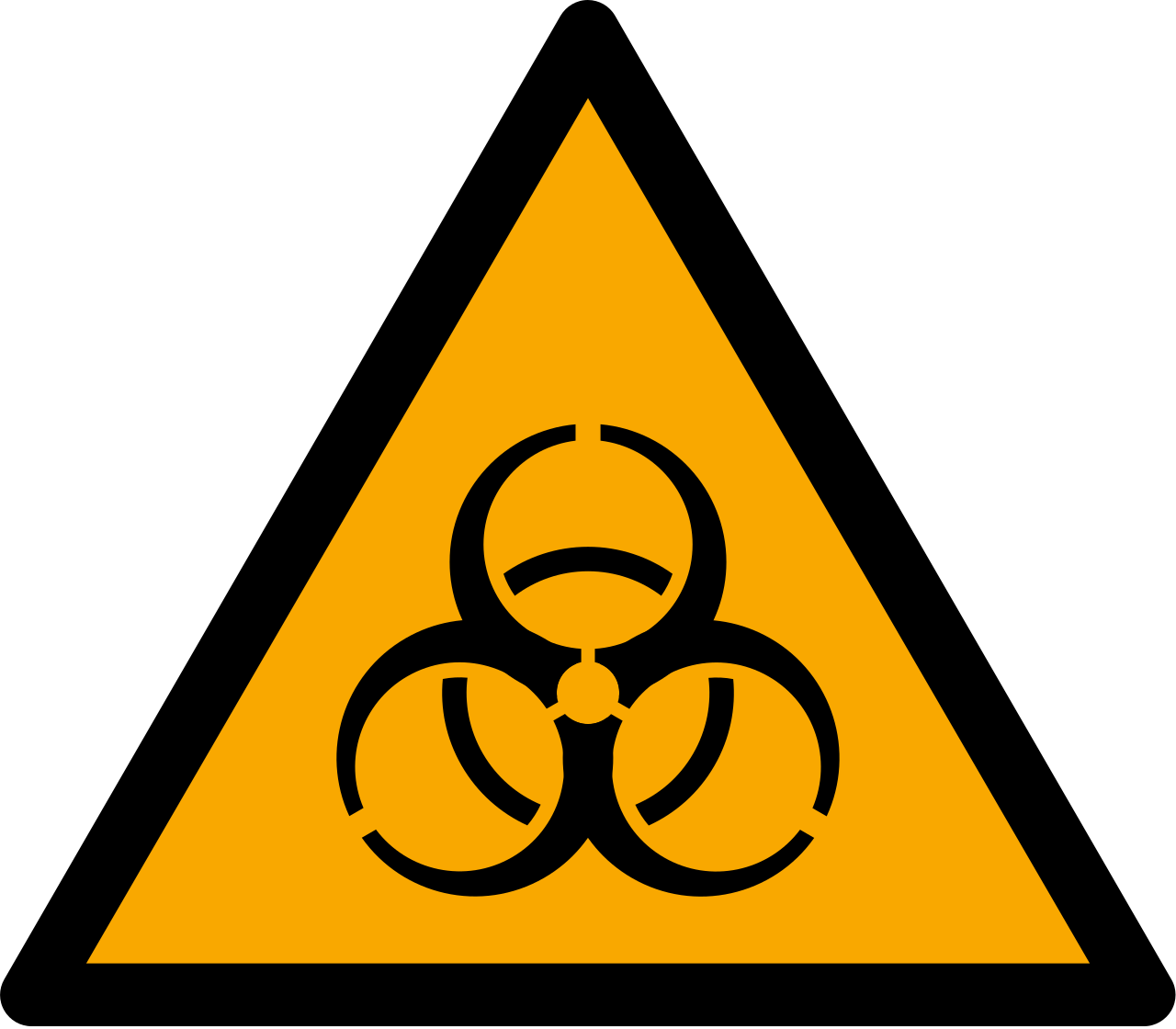Which of the following can be interpreted as indexical signs and what do they stand for if interpreted in this way: (a) the sound of thunder, (b) a painting of a dog on a unicycle, (c) a body temperature of 38 degrees (Celsius), (d) a black flag containing the following image: ☠, (e) the following shapes in the snow: 🐾.
Section 2.6 Beyond the basics: Index, icon and symbol in semiotics
Language is the most important meaning-making activity that humans engage in, and, as discussed in Section 2.1, it is characterized by arbitrary associations between form (a sequence of sounds (or graphemes) or a gesture) and meaning. However, language is not the only human meaning-making activity, and arbitrary associations are not the only associations between form and meaning that are relevant to humans. In this section, we will take a broader look at forms, meanings and the connections that may exist between them.
Subsection Indexical signs
The most direct association between form and meaning is a physical connection between two entities such that the presence of one can be inferred from the presence of the other. Such an association is referred to as indexical, and when interpreted as a sign by humans, it is referred to as an index.
Perhaps the most straightforward example of such a physical connection is that of cause and effect. If we are familiar with fire, seeing smoke allows us to infer the presence of a fire, even if we have no direct evidence of the latter, as in the picture shown in Figure 2.6.1. Thus, we can say that smoke is an index of fire.

A two-lane road leading towards a mountain range on the horizon, with a strip of green grassland and a forest to both sides. A massive cloud of white smoke is rising from behind the mountain range, covering a third of the image, the rest consisting of blue sky.
Causal relations are just one instance, though. Any physical, real-world connection can be interpreted indexically. Recall the hypothetical pointing gesture we mentioned in Section 1.1 — humans do, in fact, use this gesture to direct each others attention to entities and thus, in a way, to refer to these entities. The pointing gesture in Figure 2.6.2 shows a typical instance of this gesture.

A person in a grey t-shirt looking away from the viewer, with the right arm raised to eye level and the index finger of the outstretched hand pointing at a tree in the distance.
If we interpret this gesture as a reference to the tree, then the relationship between the form (pointing) and the meaning (“the mountain range in the distance”) is physical in the sense that both gesture and mountain exist at the same time in the same area and that mentally extending the pointer’s index finger and following its path leads our gaze to the tree.
Question 2.6.3.
Subsection Iconic signs
A somewhat less direct link between form and meaning is one based on similarity. It is less direct because a human interpreter has to perceive the similarity to infer the meaning from the form, and this leaves room for different interpretations. For example, the warning sign in Figure 2.6.4, which means ‘warning: flammable materials’, is based on similarity: humans who are familiar with fire can recognize it as a stylized silhouette of a fire.

A black horizontal bar from which a black silhouette of a flame rises, inside this silhouette, there is a small white silhouette of the same shape.
Another example of an iconic sign is the traffic sign for ‘rest area’ shown in Figure 1.1.1. In its different versions, it always shows a stylized silhouette of tree and a table (sometimes also the silhouette of a bench and a sitting person). Humans who are familiar with benches and trees can recognize these stylized silhouettes.
The link between form and meaning is less direct in iconic signs than in indexical ones, however. First, similarity is a matter of degree: There are many different types of fire and many different types of tree, and there are different ways of simplifying both when creating an image of them. Recognizing the depicted concepts is not straightforward, then. The flame, for example, could also be interpreted as the image of a bush, of the top of a paintbrush, the hair of a troll, etc. Second, recognizing the similarity does not give us the complete meaning of the signs in question: The flame does not mean ‘fire’, but ‘flammable substance’, and the rest area signs do not mean ‘table near a tree’ but ‘rest area’, even though flammable materials do not look like a flame, and rest areas do not necessarily have trees, or even tables.
In both cases, the actual meaning of the sign is motivated by similarity, but it is not determined by similarity: both signs could be interpreted differently, and both meanings could be expressed in very different ways (the variation in picnic signs is an indication of this).
Question 2.6.5.
(a) Think of five examples of iconic signs from your everyday life. Discuss the extent to which their meaning is motivated by similarity. (b) The following image shows the plaque that the pioneer spacecraft launched in 1972 and 1973 carry to communicate something about their origin to a potential extraterrestrial intelligence intercepting the spacecraft. What aspect of it is iconic, and to what extent would this help an extraterrestrial being?
Line drawing showing a naked man and woman, a side view of the pioneer space craft, and various shapes (e.g. a point with lines of different lengths radiating out from it, a series of circles of different sizes corresponding to the size of planets).
Subsection Symbolic signs
Finally, there is the arbitrary link between form and meaning, based purely on social conventions, that is typical of language. It is also found in other sign systems. For example, the alchemical sign for fire (as one of the four elements recognized in alchemy), is an equilateral triangle resting on one of its sides, as shown in Figure 2.6.6.

An an equilateral triangle resting on one of its sides.
There is no physical connection and no resemblance between a triangle and the concept FIRE: the connection between form and meaning is arbitrary. The relation between form and meaning is based only on convention — if you don’t know the meaning of the sign, there is no way of inferring it. Arbitrary signs are also referred to as symbols.
Another example of a symbol in this sense is shown in Figure 2.6.7, the international warning sign for ‘biohazard’.

A yellow triangle with a black boundary, containing an image of a black circle, with three circles superimposed, which each have a gap at the point furthest away from the inner circle.
Again, there is no way of inferring what this symbol means (in fact, it was originally chosen, among other things, because people did not associate any meaning with it). And it is obvious why a sign for “biohazard”, unlike the one for “flammable substance”, has to be arbitrary: biohazards are invisible to the human senses, so there is no relation of similarity which could be exploited.
Symbols like the one for ‘the element fire’ and ‘biohazard’ are like words in that their meaning has to be learned, just as it does in the case of words like tree, health insurance or biohazard. However, human interpretation processes are not as constrained in the visual domain as they are in the case of language. While linguistic forms consist of speech sounds that are meaningless in themselves, visual signs, including symbols, consist of shapes that always have a potential to be interpreted iconically. While it is impossible to guess, for example, what the symbol for ‘biohazard’ means, we might guess that it stands for something bad — the tentacle-like entities look slightly menacing. And this menacing impression is certainly salient once we know what the symbol stands for — we might even see the tentacles as breaching the containment of the inner circle.
Question 2.6.8.
-
Consider the following currency characters: (a) $ (used, among others, for the US, the Canadian and the Australian Dollar and the Mexican Peso; (b) £ (used for the British Pound), (c) € (used for the Euro), (d) ¥ (used for the Japanese Yen and the Chinese Yuan), (e) ₽ (used for the Russian ruble), and (f) ₹ (used for the Indian Rupee). To what extent is each of these signs iconic or arbitrary?
-
The character for the electronic pseudo-currency “Bitcoin” looks like this: ₿. Why did the creators of this character add lines to the letter B? Looking at the established currency characters, could you argue that these lines have a meaning? If so, is the association arbitrary or iconic?
